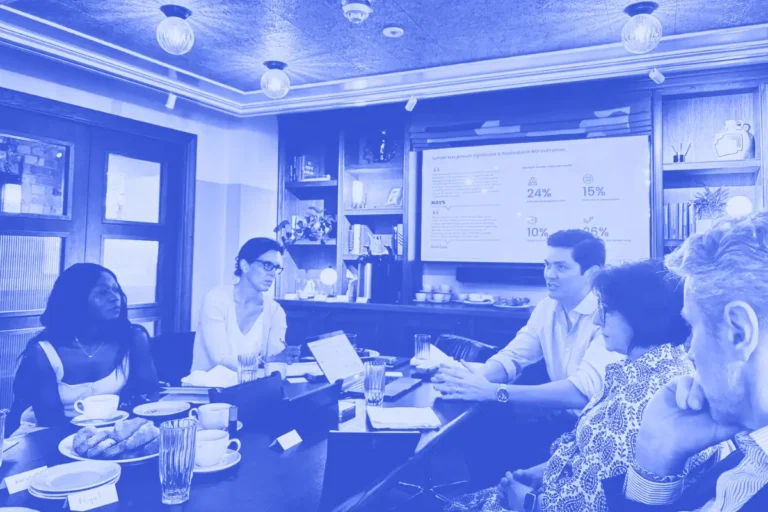How do you take care of your people? If you’ve rolled out an Employee Assistance Programme (EAP), you’re likely falling short of supporting all aspects of your employee’s health, safety and wellbeing.
Traditionally, EAP services have been synonymous with counselling services. In the UK alone, EAPs provide over 1.3 million counselling sessions annually. That means they’re mostly operating from a perspective of reaction (not prevention) and only address problems once they’ve escalated to a crisis point.
But this isn’t the only challenge with traditional EAPs. Utilisation rates are incredibly low. When assessing recent research*, the average utilisation rate of EAPs across Australia, the UK and the US tends to sit as low as 5%, if not lower.
Lack of awareness is another major challenge. Despite having access to EAPs, only 27% of employees realise one exists in their workplace.
As a result, employees are no longer able to bring their best selves to work — or even make it into the workplace at all. The Institute for Public Policy Research reports the UK lost £100 billion due to employee sickness last year alone. Plus, presenteeism is on the rise, costing the nation £25 billion in lost productivity annually.
To help you understand the key challenges reshaping workforce wellbeing, we sat down with Brian Long (Group Health, Safety and Wellbeing Director at Wates Groups) and Dr Julian Nesbitt (Founder, Dr Julian Healthcare Platform) to unpack actionable tips and innovative strategies you can implement to support your team’s mental health, safety and wellbeing.
Watch the full recording here, or catch up on the highlights below.
*References: IBISWorld, Productivity Commission, Society for Human Resource Management, The American Journal of Health Promotion, EAPA UK
Why traditional EAP services alone aren’t enough
One of the biggest drawbacks of a traditional EAP is its focus on reactive care.
Typically, employees can only access care once issues have escalated in severity, leaving your people without the tools, resources and support they need to prevent ill health and address small concerns before they snowball into much larger, more serious problems.
“If you only have that very acute reactive level of care to offer back to people, most people won't get to that place or feel like they need to be supported at an acute level. EAPs have a place, but it is a very discreet place, and it's certainly not the answer for every kind of issue that people may present with when they come to work.”
Group Health, Safety and Wellbeing Director at Wates Groups
Taking a reactive approach can also mean that employees may take longer to recover and return to work, too. Presenteeism and absenteeism are much easier to tackle at a company level if your people are empowered to build healthy daily habits that proactively prevent them from needing to take unplanned time away from work.
“If you can act early, give someone the right support for them with the right tools, experiences, and the right type of care for them, then they’ll respond much, much better.”
Founder, Dr Julian Healthcare Platform
Why personalisation is essential
Relying on traditional EAPs often means giving your people access to generic, one-size-fits-all care. Not only are EAP services typically focused on counselling, but many come with a cap on employer-funded sessions, focusing on short-term fixes and quick wins rather than tackling the root cause of an employee’s distress.
Throw in the challenges facing EAP providers (including a lack of trained clinicians, long working hours, limited resources and a high-pressure environment), and it’s not hard to see why employees aren’t receiving the highest level of care.
“Unfortunately, the whole [traditional EAP] system, in a way, is doomed to fail. The person coming to an EAP is craving a level of support that the clinician may not be able to give simply because, structurally, there are just too many things that are impeding that relationship and that connection to work to work well.”
Group Health, Safety and Wellbeing Director at Wates Groups
Dr Julian echoes this sentiment, explaining that “everyone is an individual and unique, and traditional EAPs have always sort of been about a generic response. Most of the time, that doesn’t work, and people need a much more personalised approach to their care.”
Employee trust and experience are paramount
As a result, many employees are skeptical about seeking help from employer-funded programmes like traditional EAPs. With a limited scope of care, long wait times for appointments and only generic solutions on offer, engagement and utilisation rates can be incredibly low.
“People start to become quite suspicious of why the EAP has been stood up by employers in the first place. Before you know it, there can be a real level of mistrust among employees towards EAPs.”
Group Health, Safety and Wellbeing Director at Wates Groups
The key to boosting usage and engagement is to offer personalised, tailored solutions that allow employees to choose from a range of services, resources and styles of support. Delivering the right support at the right time (to a high standard) is what will build trust with your people and ensure you can prevent ill health rather than respond to it.
“There is good evidence now that shows people will just give up and disengage if they’re given access to support that isn’t right for their needs. Often, they’ll see the service as annoying or pointless, which is why it's so important to deliver the right help for that individual.”
Founder, Dr Julian Healthcare Platform
Company culture is a key driver
As an employer, you have an important role to play in sharing the culture of your organisation. Simply introducing a traditional EAP isn’t enough to build a company culture that prioritises employee wellbeing, reduces stigma around mental health and encourages open communication.
With EAP alternatives, you’re able to offer flexible, personalised support to your people that will foster and encourage help-seeking behaviour.
But don’t take our word for it. In this webinar, Brian shared a practical example of a workforce initiative he helped to roll out that improved employee wellbeing by reshaping company culture.
“Australia’s largest retailer, Woolworths, implemented an initiative called ‘I Am Here’. The intent was to help thousands of people upskill in caring, considerate and active listening and ultimately learn how to respond when people come to them with peer-to-peer sharing of difficult experiences. Even if employees weren’t in an acute state of distress, having the opportunity to open up to a colleague had a lot more value than assigning someone a form and then going through HR to access an EAP.”
As a result of this initiative, Woolworths helped to destigmatise help-seeking behaviour, fostered closer bonds between team members and created a feel-good factor around prioritising health and wellbeing at work.
Mental health impacts the bottom line
Giving your people access to care beyond traditional EAPs isn’t just good for employee health and wellbeing. In fact, there are tangible benefits when it comes to boosting productivity, reducing costs and lowering the risk of employee turnover.
“From a cost-benefit perspective, there is a lot of evidence to show that investing in the right level of care for individuals (even if it is initially more expensive) then it can end up saving the company in the long run through lower absenteeism and faster return-to-work rates.”
Founder, Dr Julian Healthcare Platform
The key to seeing the ROI and cost benefits of an employer-funded care programme is ensuring the services offered are holistic, tailored to the individual and focused on prevention, not cure.
“Employers need to be able to show how they’re taking care of their employees beyond writing it down in brochures and marketing material. You have to match that rhetoric with action, and a very tangible way to do that is by taking a preventative approach to care.”
Group Health, Safety and Wellbeing Director at Wates Groups
Want to know what poor worker wellbeing is costing your organisation? Try our free EAP comparison calculator to see how much you could save by moving to a complete employee care platform.
Ready to introduce an assistance programme your employees will actively engage in? Book a free Sonder demo today and check out our Insider’s Guide to EAPs to learn more about how to track return on investment and return on value.



